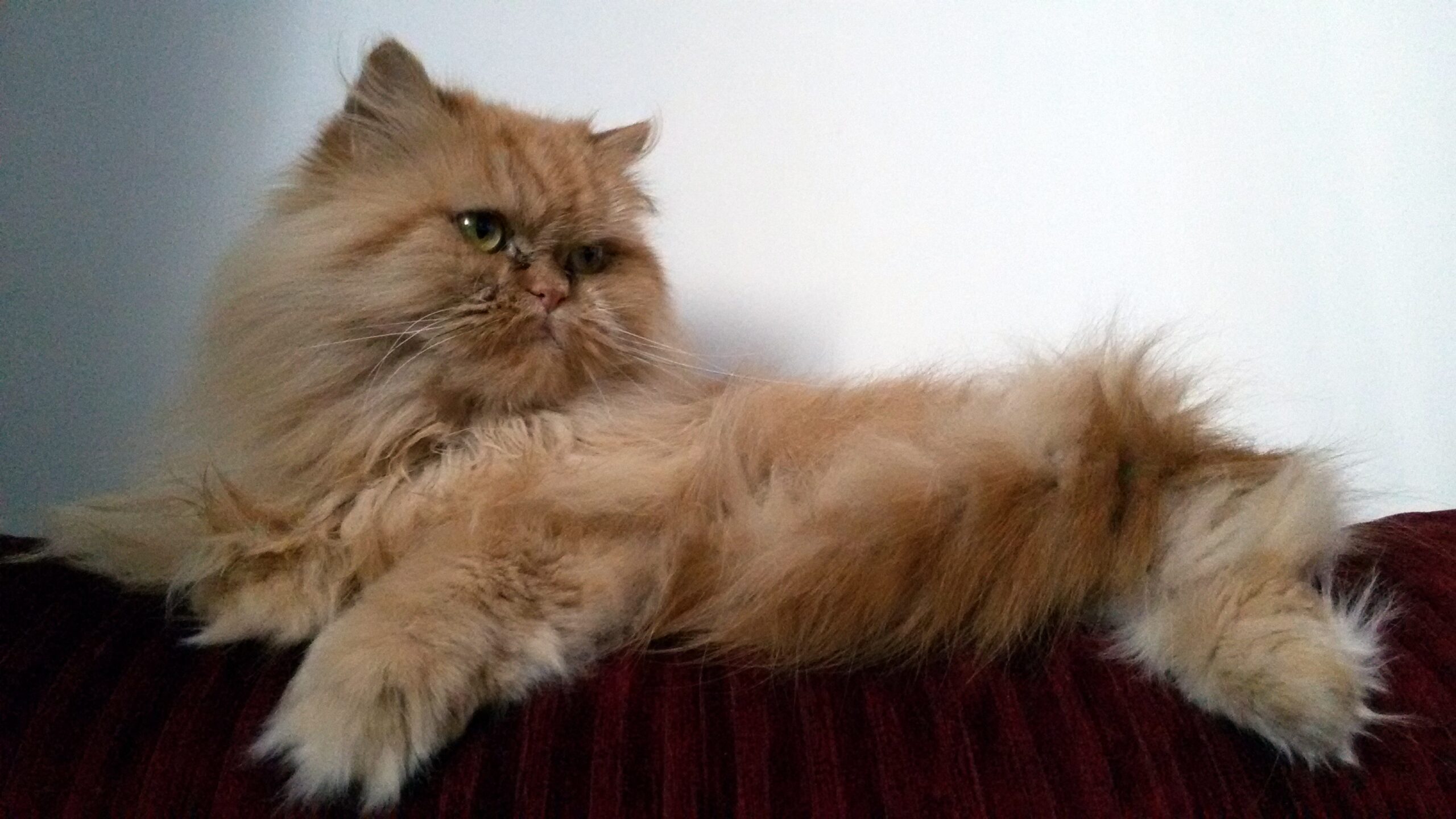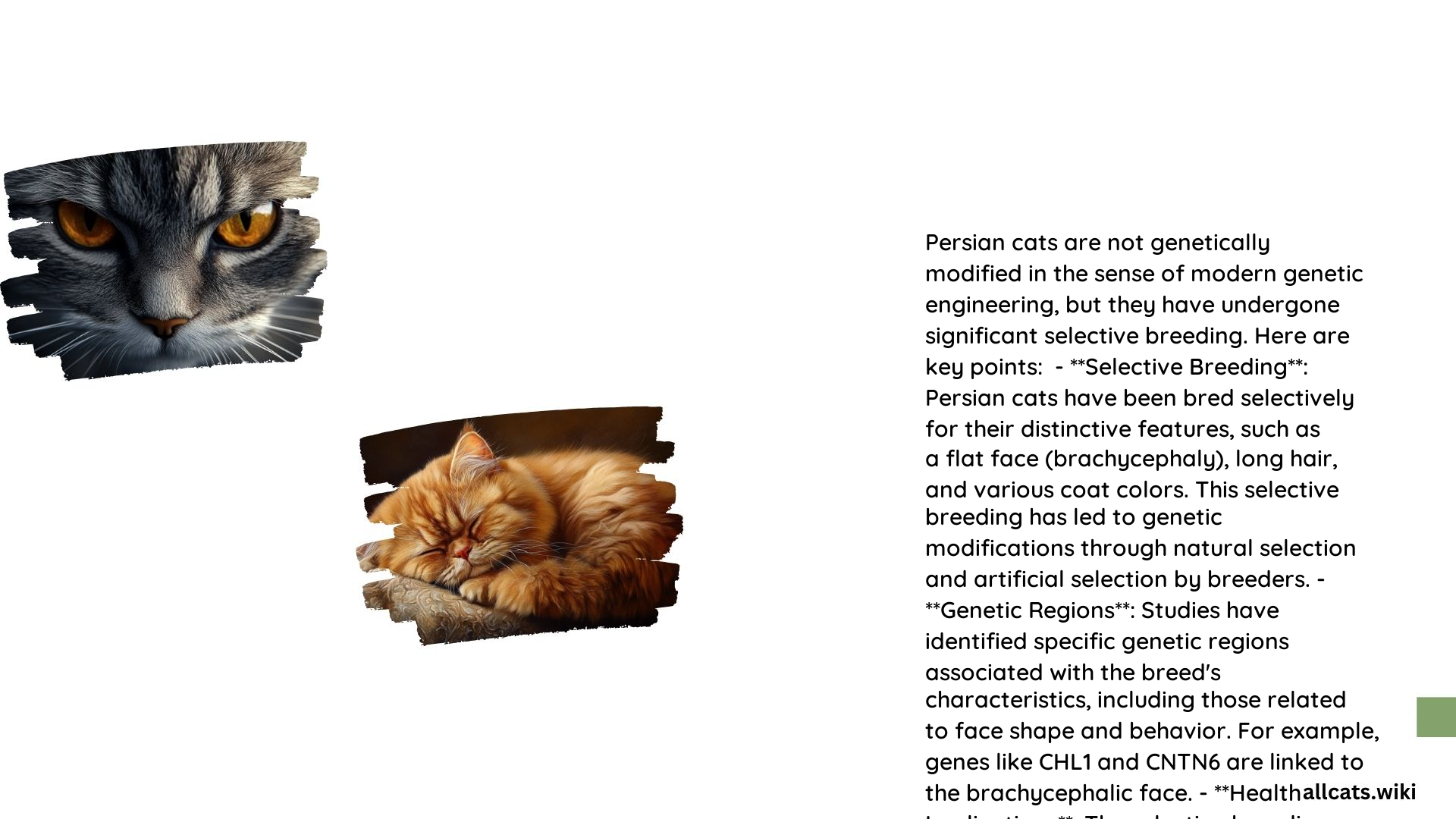Persian cats have not been genetically modified in the sense of using genetic engineering techniques to introduce foreign DNA into their genome. Instead, their distinctive physical features, particularly the brachycephalic face, have been achieved through selective breeding practices over several centuries.
What is the History of Selective Breeding in Persian Cats?

- Selective Breeding for Physical Traits:
- Persian cats have been bred selectively for their long hair, round face, and short muzzle. The modern brachycephalic face of Persian cats is a result of breeding practices that began to emphasize this trait in the mid-20th century. A genetic mutation in the 1950s led to the development of kittens with flat faces, which breeders then selectively bred to enhance this feature.
-
This selective breeding has led to the creation of a breed with a highly brachycephalic skull structure, which is distinct from the traditional or “doll face” type of Persian cat.
-
Genetic Studies:
- Genetic studies have identified specific regions of the genome associated with the brachycephalic face in Persian cats. For example, research has found genes such as CHL1 and CNTN6, which are known to influence face shape in humans, to be positional candidates for the brachycephalic face in Persians.
- These studies indicate that the brachycephalic face is a result of natural genetic variation within the breed, amplified by selective breeding.
What are the Health Implications of the Persian Cat’s Brachycephalic Face?

- Health Issues:
- The brachycephalic face of Persian cats is associated with several health issues, including respiratory problems, excessive tearing, and eye issues such as entropion. These health issues are a direct consequence of the selective breeding for extreme brachycephaly.
-
Other genetic health issues prevalent in Persian cats include polycystic kidney disease (PKD) and hypertrophic cardiomyopathy (HCM), which are hereditary conditions that have been managed through DNA testing and selective breeding.
-
Behavior and Care Requirements:
- Despite their health issues, Persian cats are known for their calm and gentle nature, making them suitable as lap cats. However, their high-maintenance grooming needs and potential health issues require careful consideration and regular veterinary care.
Conclusion: Are Persian Cats Genetically Modified?
- No Genetic Engineering:
-
Persian cats do not contain genetically modified organisms (GMOs) in their DNA. Their physical characteristics have been shaped by traditional selective breeding practices rather than genetic engineering techniques.
-
Selective Breeding:
- The distinctive features of Persian cats, including their brachycephalic face, are the result of selective breeding over many generations. This process has introduced specific genetic traits that define the breed but also come with associated health risks.
References
- Wikipedia: Persian Cat
- We Are All About Cats: 10 Fascinating Facts About Persian Cats
- PubMed: Evidence of selection signatures that shape the Persian cat breed
